Hepatitis B virus (HBV) infection is known to be associated with the risk of hepatocellular carcinoma (HCC), but how and why they are connected remains unknown. Researchers from Mass General Brigham discovered that HBV does not cause liver inflammation or cancer on its own, but worsens liver inflammation and may make patients more susceptible to early cancer development caused by environmental carcinogens. Limiting carcinogen exposure or reducing inflammation could mitigate this risk. The results are published in Nature Communications. “Our…
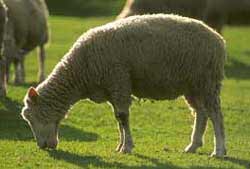
You would be forgiven for underestimating the intelligence of sheep, considering that their daily activities revolve around grazing. But research reported in the current issue of Nature indicates that, in fact, sheep possess more smarts than previously thought.
Keith Kendrick and colleagues at the Babraham Institute in Cambridge, England, investigated the sheep’s ability to distinguish and remember faces of both other sheep and humans. Presenting 20 sheep with pictures of 25 pairs of sheep

Scientists are finally beginning to understand how common genetic differences among individuals underlie differences in the structures that make up their brains. In the first attempt to actually map these variations, neurologist Paul Thompson and colleagues at the University of California at Los Angeles have discovered that brain structures related to cognitive ability and language seem to be under tight genetic control. The group’s findings, which could help explain how diseases like schizophre

Air lets water droplets skim across the kitchen sink.
Scientists have found the answer to a question pondered over many a kitchen sink: why do little droplets skim across the surface of washing-up water rather than mix with it?
Yacine Amarouchene and colleagues at the University of Bordeaux in Talence, France have discovered that the height from which the drops fall has no effect on their lifespan 1 .
Soap, detergent – and indeed food grease – are ’
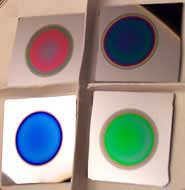
A microelectronic sensor may alert doctors to bacterial hazards.
Smart bandages could soon alert doctors to the presence of certain bacteria in a wound by glowing different colours. Researchers in the United States have created a tiny device that emits faint light of two colours in response to two types of bug 1 .
Benjamin Miller, of the University of Rochester in New York State, and colleagues hope that a refined sensor might ultimately generate an instant an
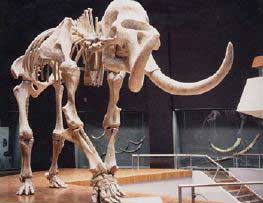
Examine any depiction of Ice Age life and you’re likely to find at least one—a woolly mammoth, that is. But popular appeal notwithstanding, the evolutionary history of this prehistoric beast has proved somewhat difficult to pin down. To that end, findings published today in the journal Science provide some much needed insight.
Working from an extensive Eurasian fossil record going back some 2.6 million years, Adrian Lister of University College London and Andrei V. Sher of the Russian Acad
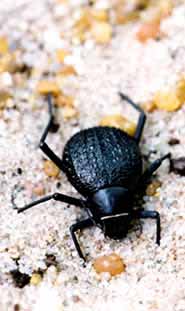
Humans learn water-gathering trick from bumpy beetle.
A desert beetle turns fog into drinking water with its wings, new research reveals. Materials mimicking the insect could help humans survive harsh environments.
Southwest Africa’s Namib Desert is one of the hottest and driest places on Earth. There is no rain, but on about six mornings a month a fog blows in off the Atlantic and across the land at gale force.
The beetle Stenocara traps this fleeting resour
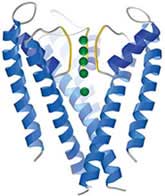
Dazzling snapshots show how ions power nerve signals round the body.
“Potassium channels underlie all our movements and thoughts,” says Rod MacKinnon of Rockefeller University in New York. His team has now unravelled the molecular mechanics of these minute protein pores. Some say the work merits a Nobel Prize.
Potassium (K + ) channels power the transmission of nerve signals through the body and the brain by ushering K + ions in and out of our cells. MacKin
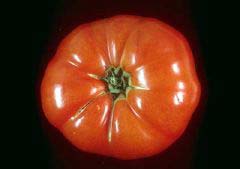
Researchers have put a new face on what may be an old genetic weapon to help plants fight off a pesky infection. Abhaya Dandekar and colleagues at the University of California at Davis gave plants an extra gene that protected them from crown gall disease—a scourge of the walnut, grape and rose, among others—when tested in the lab. They publish their findings today in the Proceedings of the National Academy of Sciences. When the bacterium that causes crown gall disease enters a plant, it starts

Scientists have long noted that people suffering from Parkinson’s disease commonly exhibit a specific personality type characterized by, among other things, a lower-than-average tendency to seek out new experiences. In explanation, investigators suggested that this trait was rooted in an inability to reap the pleasurable rewards of increased dopamine levels normally brought about by new stimuli because the disease destroys the neurotransmitter. Previous studies of personality and dopamine activi

New light-sensitive glass can be recycled cleanly.
Researchers in Japan have developed recyclable light-sensitive glass. The new ’ecoglass’ does not contain the environmentally damaging halogen elements chlorine, bromine or iodine. These elements are essential to the photochromic glass that is currently used for car windscreens, sunglasses and visual display units.
Like photographic film, today’s photochromic glasses darken because they contain compounds of silver and halog
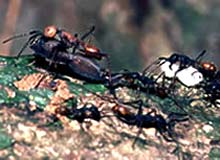
Army ants team little with large to lift heavy loads.
If you can’t see the point of the miniature back wheel on a penny-farthing bicycle, try riding a unicycle or watch an ant colony. Ants have realized that, to carry a heavy load, two supports are better than one – even if they seem comically mismatched.
When army ants partner up to carry a lump of food too big for a single ant to transport, an unusually large worker ant takes the front, and an unusually small one, the back
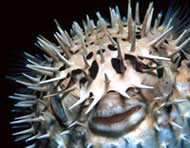
Draft Fugu genome will help find human genes.
A draft sequence of the puffer-fish genome is complete. The fish’s compact genetics should accelerate the discovery of human genes and their key controlling sequences.
Gene-prediction programs struggle to find genes in the 3 billion letters of the human sequence, which includes swathes of junk DNA and defunct pseudogenes.
The bony fish Fugu rubripes shares our gene repertoire but has a genome one-eighth of the size.
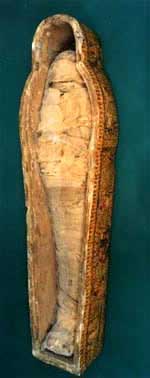
Ancient embalming not to be sniffed at.
Archaeologists thought they had mummification wrapped up. But a new analysis of ancient Egyptian embalming suggests that they have underestimated this sophisticated funerary practice.
Pharaonic undertakers used a wealth of oils, waxes and fats, say Stephen Buckley and Richard Evershed at the University of Bristol, UK. They are the first to study several mummies from different periods using modern analytical chemistry 1
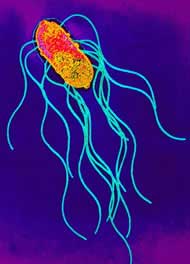
Bugs behind typhoid and food poisoning give up genetic secrets.
Two teams have sequenced the genomes of two Salmonella bacteria. One is responsible for typhoid; the other causes food poisoning.
The genomes should lead to new ways to diagnose, treat and vaccinate against both diseases. Comparing the sequences should also clarify why the closely related bugs behave quite differently.
The two strains are called Typhi and Typhimurium. Typhi, the typhoid bug, infects onl

Recent events have confirmed that bioterrorism is no longer a threat but a reality. To provide wide-ranging access to the latest scientific information about anthrax and other potential bioweapons, Nature has put together a special online focus on this issue. This focus includes the pre-publication* of two research papers on anthrax toxin, as well as a collection of research, news and feature articles from our electronic archive. Because of the heightened interest in this area, among both the scient
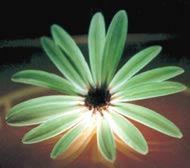
Genetic engineering gives us the fluorescent daisy.
It’s produced in Italy and guaranteed to make the face of that special someone light up. It’s the luminous bouquet. Under ultraviolet light the apparently normal blooms glow an unearthly green.
“The fluorescent flowers show that genetic engineering can be developed just for beauty,” says their developer, Tito Schiva of the Experimental Institute of Floriculture, San Remo. The technique should work for any white flower, Sch